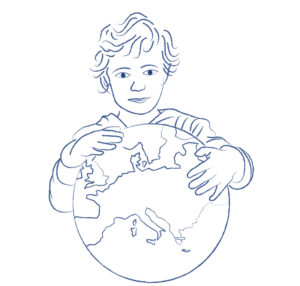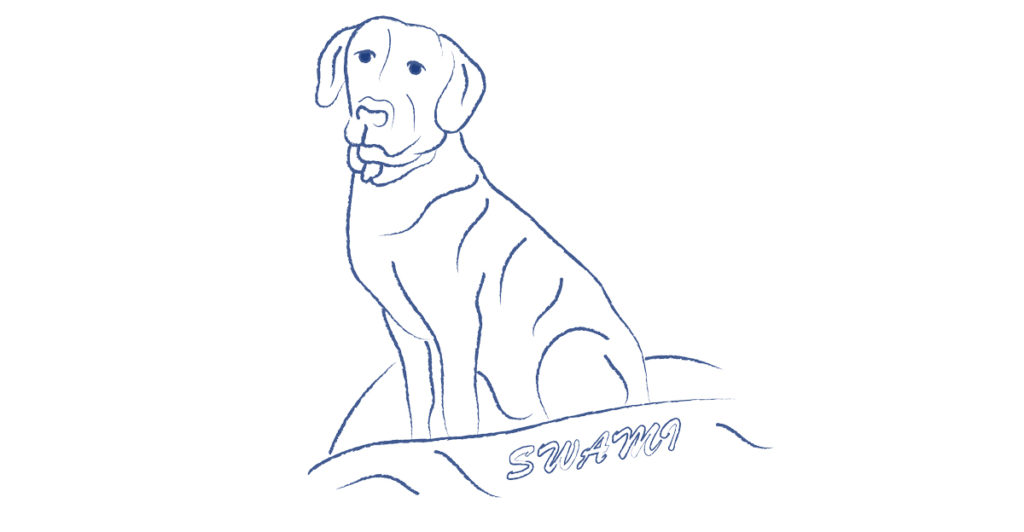The Children’s House is where children will discover many aspects of the world they belong to. We give a lot of time and importance to the study of Peoples of the World, animals, plants, science, music and art. Children are encouraged to explore the wonders of their world using the specific material we have in class, but also by following their own discoveries and interests.

Our aim in Montessori education is to help children feel an integral part of their natural world – to feel that they belong to a large, diverse human family, to respect all that our earth has to offer and all that human beings have created.
Our World
In The Children’s House the children are introduced not only to the basic aspects of physical geography, such as land and water forms, but also to the countries and cultures of their world.
Starting with the idea of ‘our planet earth’, and then gradually moving on to the continents, countries, their capitals and flags, the children gradually discover the diversity of their planet. They come to recognise the size and shapes of countries by working with puzzle maps of the various continents. This is an activity which they greatly enjoy, and opens the door to so much more work and exploration, as well as an interest in cultural celebrations, customs and traditions the world over. It is from such a young age that children begin to appreciate and respect the cultural diversity prevalent in today’s society. It is for this reason we respect the cultural heritage of each one of our families and pupils in our school.
The World of Plants and Animals
Children express a natural curiosity for plants and animals. We feed this curiosity by providing them with many activities, so that they may come to love and respect all the wonders that the natural world abounds in.
Children at our school will have immediate access to a small fenced garden, attached to each of their classrooms. There they will have the use of a greenhouse to plant their seedlings, as well as a vegetable patch to look after and many other plants, flowers, trees and bushes to water, prune and tend to. There is also a covered area where children will be free to bring an activity from the classroom and have that unique opportunity of working outdoors in nature. This is where they will have the chance to observe and look closely not only at plants but also at all the insects and animals – the tiny ones, the small ones and the big ones that inhabit the natural environment.

Furthermore, on the shelves in our classroom, you will see specific activities which correspond to the natural interest children have for plants and animals. You will find many classified pictures of the plant and animal kingdoms. You will see our leaf cabinet containing many specimens of different shaped leaves and you might see older children using the very specific nomenclature of the leaf shapes in order to create their own botanical leaf folder. You will also see children decorating their tables with vases of flowers and others with a magnifying glass examining some interesting phenomenon of nature!
The World of Art, Music and Science
Art, music and science are human creations. They are a reflection of our intelligence and they provide us with a heritage on which to build further discoveries and creations. For this reason we consider it very important to introduce children to all these disciplines, and to offer them key experiences which will spark their interest and awaken their curiosity.
The environment of The Children’s House has been prepared so that it is aesthetically pleasing, incoporating artistic elements which the children spontaneously absorb without their knowing. Apart from paintings hung on the walls at the right height for children to view, we introduce works of famous artists by using the many classified picture cards we have prepared as well as art books. Should a small group of children show a particular interest in an artist or a technique, we organise visits to museums or exhibitions in order to broaden their interest. The children come into contact with art through activities which introduce them to the tools artists use: for instance, they will experiment with the different types of paper, colours, glues, threads etc. which are used in various techniques. In this way, children acquire knowledge and experience, images and ideas and are encouraged to create their own artwork, based on their interests and abilities. Should any artistic parent or friend from our community wish to share with our children their love of art, please know that you are always most welcome!

In The Children’s House we introduce children to the world of music by showing them how we listen to music and through listening, children gradually come to distinguish and recognise certain sounds. For this reason we make sure that they are introduced to a wide range of music and songs from all over the world spanning all epochs. We also have a sensorial piece of educational material which we call “The Bells”. This beautiful material was created by Dr Montessori and helps children familiarise themselves with the notes of the chromatic scale, and hence with the structure of Western music. In a Montessori class you will often see children creating their own compositions, singing, dancing and telling stories using the percussion instruments we have in class. It is through stories, especially prepared, that we introduce children to the lives and works of composers. We also present children with a variety of musical instruments explaining their origin, encouraging them to listen to the particular sound of each instrument and to experience how the instrument is played. Should any musical parent or friend from our community wish to share with our children their love of music, please know, that you are always most welcome!
Children are not merely encouraged to listen to music in our school they are also encouraged to move to it. This is something that comes naturally to children. We show them how to pick up the rhythm, the tempo, and mood of a certain piece of music and then we encourage them to freely use their bodies to express themselves in space. Our teachers have all been trained to incorporate these activities (either indoors or outdoors) in the course of the day, whenever they feel that the children would enjoy it. In this way, music, song and rhythmic movement become a natural part of the children’s day at school and are included in the daily routine.
The teachers prepare simple science experiments which give children the opportunity to experience certain laws of nature. The experiments all take place in the science corner. The equipment used is real and the children learn how to care for it. They are free to chose an experiment and repeat it as many times as they wish in order to explore it further. In this way the children, particularly the older ones, begin to ask questions and make discoveries as they start to explore a more abstract view of their world.
